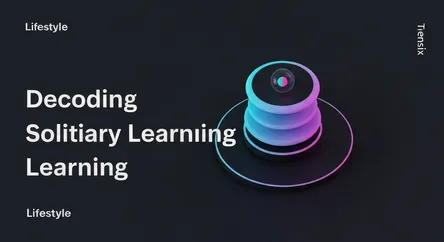Lifestyle
Decoding Solitary Learning

Explore solitary learning, the trend of studying alone. Understand why this independent educational style is gaining popularity and how it impacts learners.
What is it?
Solitary learning, also known as independent or self-study, is an educational approach where individuals acquire knowledge and skills on their own, without direct interaction with a teacher or classmates in a traditional setting. This method emphasizes self-reliance, using resources like books, online courses (MOOCs), video tutorials, and personal projects to guide one's own educational journey. It's a style favored by those who prefer a quiet environment and the ability to control the pace and depth of their studies, allowing for deep concentration and personalized exploration of topics.
Why is it trending?
The rise of the internet and digital technology has made solitary learning more accessible and popular than ever. Platforms like Coursera, YouTube, and Khan Academy provide vast libraries of high-quality educational content for free or at a low cost. This trend is also fueled by a growing desire for flexible, lifelong learning to adapt to a rapidly changing job market. It caters to various personality types, particularly introverts who may find traditional classroom environments overstimulating, and offers a convenient way for busy professionals to upskill on their own schedule.
How does it affect people?
Solitary learning fosters significant personal growth, promoting self-discipline, time management, and problem-solving skills. It empowers individuals to take ownership of their education, leading to a deeper and more meaningful understanding of subjects they are passionate about. However, it also has its challenges. Learners can experience feelings of isolation and miss out on the collaborative benefits of group work, such as diverse perspectives and social feedback. Success in solitary learning heavily depends on a person's intrinsic motivation and ability to stay on track without external accountability.